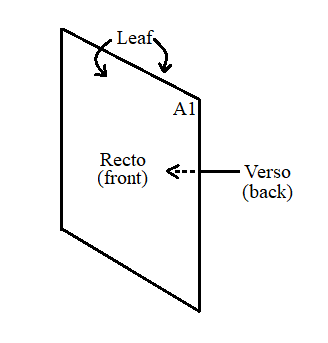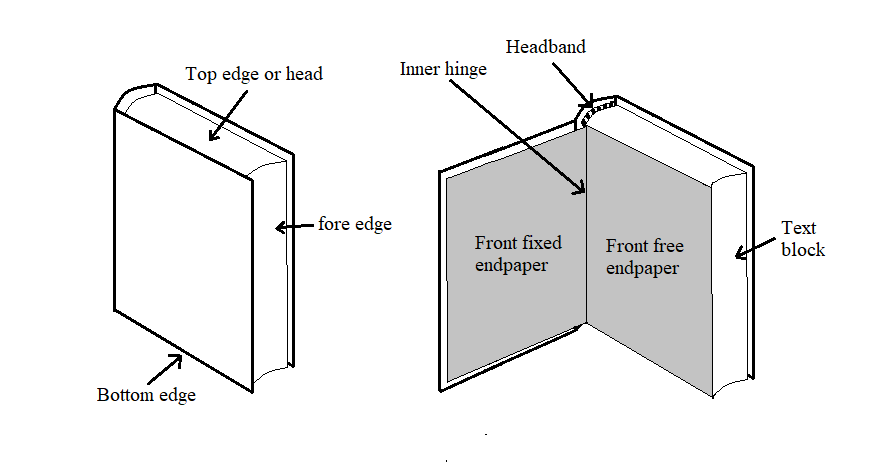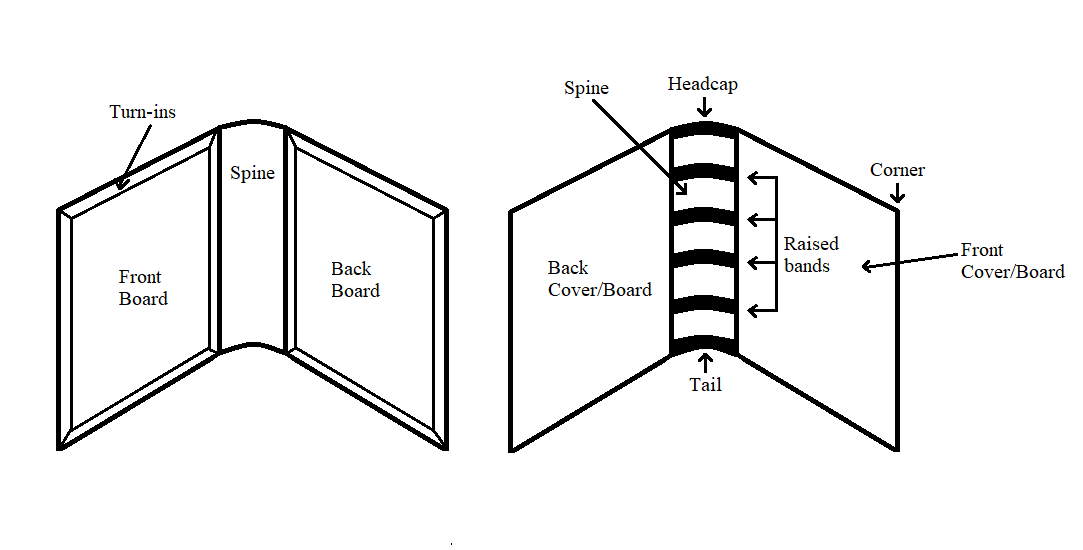Before I worked in a second-hand bookshop, I didn’t know anything about old books; how they were made, what materials were used, how the pages were folded, or any of the terms for the different parts of a book. Over the last six years I’ve learnt a lot and I have been reading books about caring for books and collecting antiquarian books.
A large sheet of paper is folded into a gathering, depending on how many times this sheet is folded determines the name of the gathering. So a quarto is when the sheet is folded in half twice to make four leaves and eight pages. A Folio is when the sheet is folded in half once to make two leaves and four pages. An octavo is when the sheet is folded three times to make eight leaves and sixteen pages. (You can try folding an A4 piece of paper to see how these leaves and pages would look.) Each gathering is given a signature A-Z and each leaf is numbered. So a quarto gathering would be numbered A1, A2, A3, A4, then the next gathering would be B1, B2, B3, B4. The letters J, V and W are not used so don’t be surprised if these letters are missing if the leaves are numbered. In new books today the leaves are often not numbered at all.
A leaf is two pages, one page on the front (Recto) and one page on the back (Verso).

Due to folding a large sheet into leaves, the pages in old books are sometimes ‘uncut’, this means the edges haven’t been cut so you can separate each leaf from one another and read the pages. Old books were sometimes sold with uncut pages that the recipient would then have to open themselves. The edges of leaves can be rough and uneven in books where the leaves have been cut open by hand.

All the gatherings are bound to make a text block, a single sheet is folded to make a front endpaper and another single sheet is folded to make a back endpaper. These endpapers have one side fixed to the boards of the books, and one side which is called ‘free’ and fixed at the hinge to the text block. Endpapers can be colourful and sometimes marbled. Additionally, the top edge, fore edge and bottom edge of a book may be gilded with gold or a colour, or marbled, and in scarce cases they may have a hidden painting.
 These pictures show the basic terms for books but you can find plenty more in-depth versions online by searching for ‘parts of a book’ or ‘book terminology’.
These pictures show the basic terms for books but you can find plenty more in-depth versions online by searching for ‘parts of a book’ or ‘book terminology’.
Book boards on old books are often covered with leather, cloth, paper, or sometimes vellum. Vellum is usually an off-white colour and is made from unsplit calfskin. Leather, cloth and paper covered boards often come in a variety of different colours, though you will find that the colour red tends to fade considerably more than other colours, particularly on the spines of books. It is best to store red books away from direct sunlight. You will often find books that are bound with a combination of leather, cloth or paper. In some rarer cases you may see boards covered with metal, wood and other materials.
An Incunable book is anything printed before and including 1500 A.D.
Johannes Gutenberg, a 15th Century German Goldsmith, is usually cited as the inventor of the printing press because he invented movable type. However different types of printing were used before the mid 15th Century. Johanne printed a Latin Bible in 1455, known as the Gutenberg Bible. About 180 copies were printed on vellum. This printing technology moved quickly to Italy and throughout Europe, reaching Britain by the late 15th Century. There is a modern book called ‘The Bookseller of Florence’ by Ross King which describes the invention of the printed book.
The earliest books that were made are often Bibles as religion played an important part in nearly everyone’s lives and books were expensive to produce and buy. However, Albrecht Pfister printed ‘Der Edelstein’ more commonly know as Aesop’s Fables in 1461. Nicolaus Jensen printed De Evangelica in 1470 and Pliny Naturalis Historia in 1475. Others printed books on philosophy and legends, including Malory’s Le Morte d’Arthur printed by William Caxton in 1485.
It is estimated around forty thousand different editions of books were issued up to 1500, and interest in these incunable books remains high, with some of these books selling at high prices. So next time you’re handling what looks to be an old fragile book, be careful as you might just be handling a pot of gold.